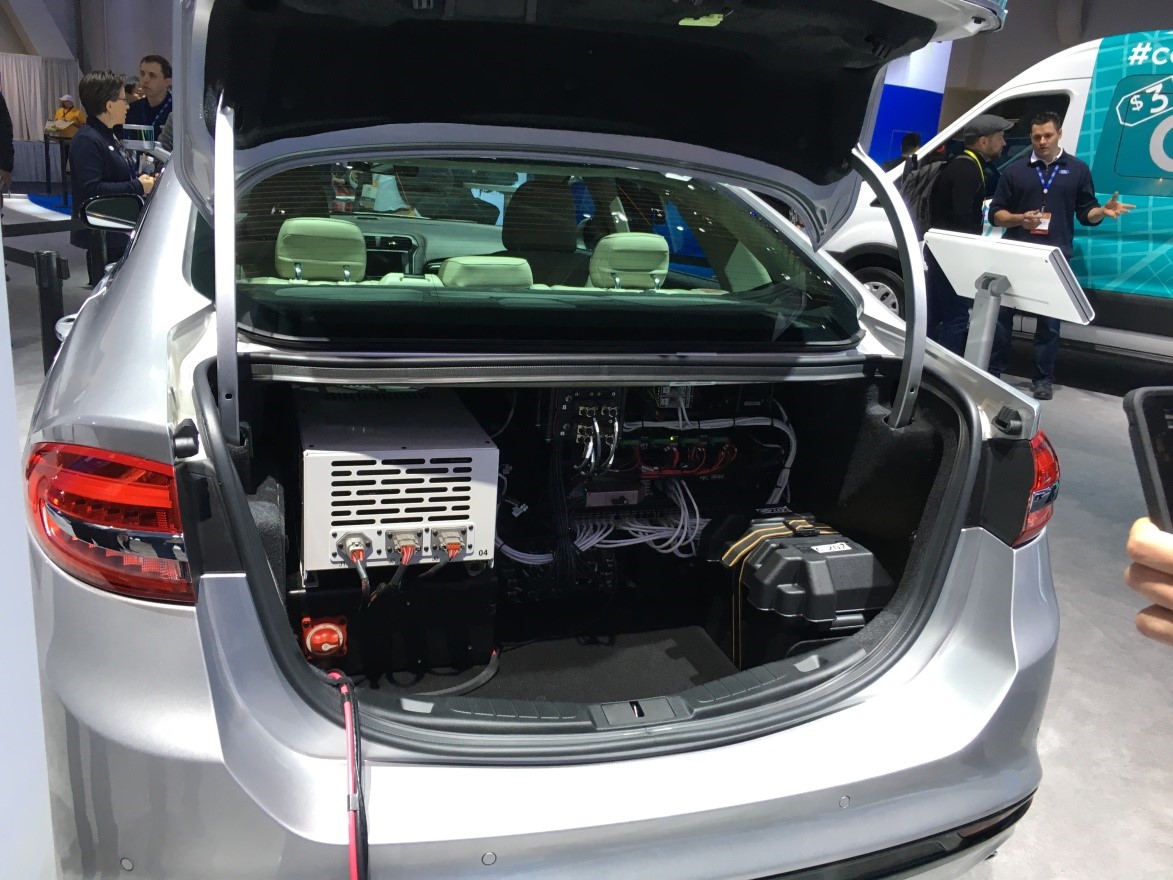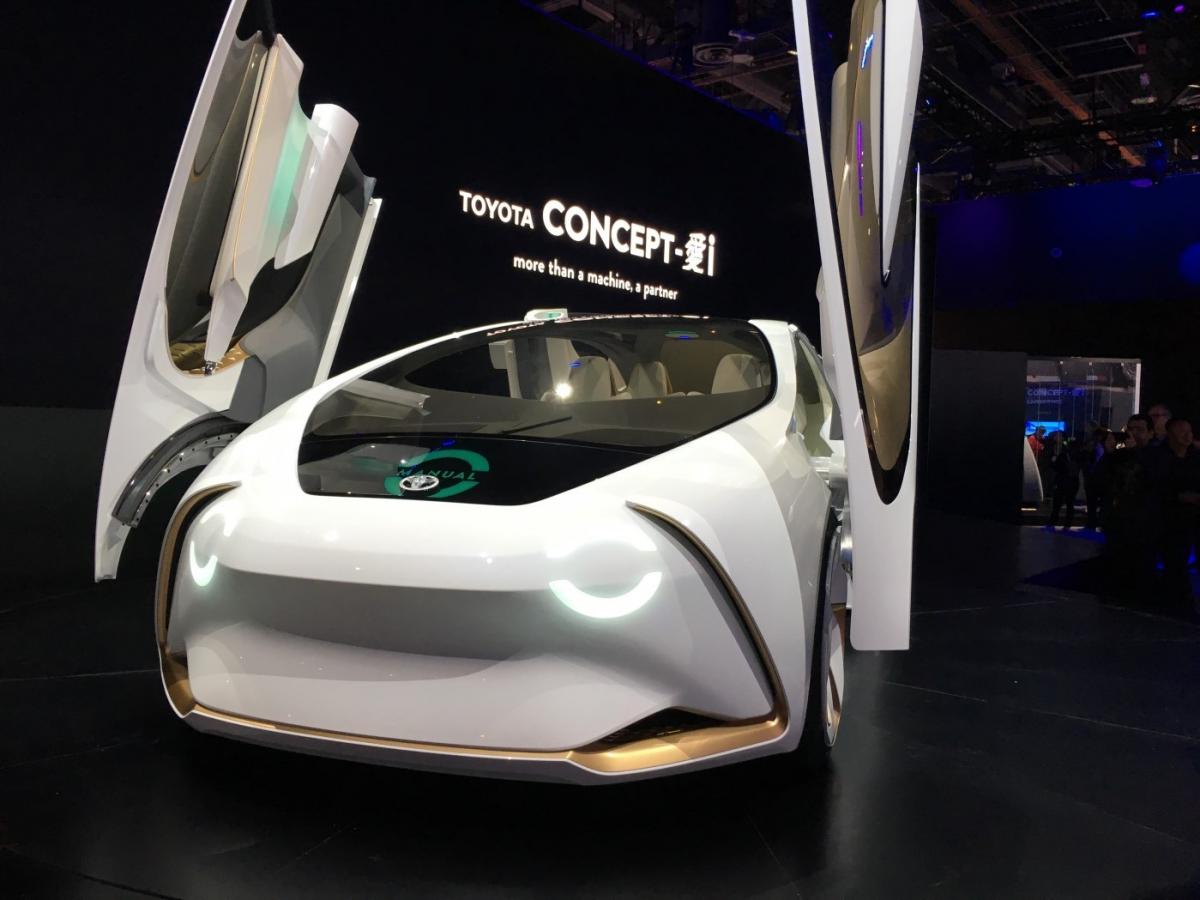You are here
CES Technology in the Driver’s Seat
What a show! Not sure if it’s the weekend attraction of Las Vegas, but CES managed to retain the crowds through Saturday. Most booths were bustling with curious attendees trying to get a better understanding of the new products and underlying technologies. Once again, the automotive section was quite busy with autonomous driving and electrification of vehicles front and center. While Level 5 autonomous driving is still several years away from reality, all manufacturers are equipping cars with some type of enhanced driving autonomy or assisted driving. In the Ford booth we saw the Ford Lincoln (pictured below) equipped as an autonomous driving car.

The first thing one might notice is that the radar, lidar, and other electronics are nicely incorporated into the body, unlike what you would see in the Google car. The current generation of autonomous driving electronics is quite bulky. It’s somewhat analogous to the mainframes from the ‘70s, when one computer required a large dedicated room. Clearly, miniaturization needs to happen on the automotive side as the picture below shows the trunk completely packed with electronics. It looks like we could barely fit one bag of groceries into the trunk.

Maybe that’s why some the electronics on the roof had been configured as a roof rack because that’s where the luggage will have to go! We are confident that in the coming years all of the electronics will shrink and most likely not consume so much space. Hopefully someone will find a way to put the controls underneath the seats or in the floorboards of the vehicle.
Ford also announced that over the next five years they will introduce 14 electrified vehicles, and we expect other manufacturers will follow suit.
Toyota had a very interesting concept car on display with gullwing doors incorporated into a highly aerodynamic design. Clearly cup holders will have to be somewhere other than the door.

IoT with voice activation and smart home were also quite prominent. Many companies were showing off ‘Alexa-type’ devices with a claim of improved voice recognition and the ability to control multiple devices within the home. Each year we seem to be getting closer to truly having the affordable smart home.
At the heart of automotive, smart home and other IoT devices are more functional cost-effective MEMS and sensors. We had an opportunity to meet with ams, an Austrian-based sensor manufacturer. They have a wide variety of sensors which includes a spectrometer-capable chip that allows an OEM to create a product that can tell you if your fruit, poultry, fish or other foods are fresh. ams also offers sensors for more industrial applications. They have sensors that can tell you whether your fuel has damaging impurities and is safe to use. This technology is not exclusive to ams, as Analog Devices also has similar technology. What is clear, is that most manufacturers are broadening their product portfolio for MEMS and sensors in order to provide products across a broad application base. Falling MEMS and sensor ASPs are opening doors to new applications but also require a strategy that incudes flexibility as one market will not sustain a company.
Speaking of flexibility, we also had an opportunity to meet with the folks at GLOBALFOUNDRIES. They continue to push forward on 7nm FinFET technology but have rolled out a dual strategy offering a non-FinFET option that is broadening their FD SOI platform. This will support customers who are questioning the roadmap that only offers FinFETs if they want to go beyond 20nm. Customers want higher performance, low power products that move from 45nm to something other than just FinFET technology. GLOBALFOUNDRIES believes that FDSOI will rival performance and power of FinFETs with the promise of a more cost-effective solution. Semico believes it’s a good strategy to develop technology that will differentiate them from just being a TSMC follower. Based on all the products and excitement at CES, the market is certainly large enough to support a variety of technologies. GLOBALFOUNDRIES believes they have made good strides from a manufacturing standpoint that will allow them to be competitive, and they understand that execution is key.
